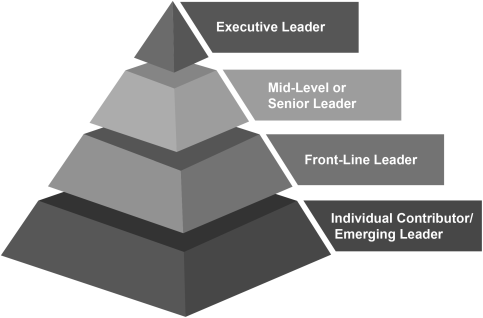Chapter 10Use the Turning Points of Leadership to Make Better Career Decisions
In The Leadership Contract, I introduced the concept of the turning points of leadership, which represent moments in your career when what it means to be a leader changes significantly. I described four specific turning points (see Figure 10.1).

Figure 10.1 The Turning Points of Leadership
Each of these four turning points is important because the expectations, demands, and pressures you experience as a leader will increase considerably. As a result, you have to think about your role and understand what has changed and what will be expected of you. Unfortunately, my team and I have found that few leaders actually do pause and think about these changes.
Many become so excited about being promoted, taking on a more senior leader role, or thinking about the pay, perks, and power that they jump into the new role blindly. Then months later, they start to realize what that new role really demands.
Many other leaders haven't necessarily jumped into a leadership role; they were backed into one. They were thrust into a role by their manager and didn't feel they could say no or were given little (if any) time to think about what they were signing up for.
When you do pause, even for a little while, you will find that the role you are considering signing up for will have many expectations and demands. You will ...
Get The Leadership Contract Field Guide now with the O’Reilly learning platform.
O’Reilly members experience books, live events, courses curated by job role, and more from O’Reilly and nearly 200 top publishers.

